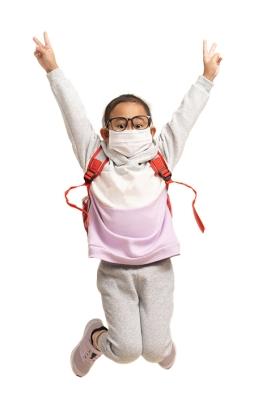
Movement can be used in the classroom as a brain break and an assessment tool.
Aerobic activity benefits the brain by preparing it to learn. Teaching elementary school students while they are up on their feet gives them the opportunity to allow their bodies and minds to work together. Students spend a lot of their day seated, learning material from their chairs, and it is important to consider that the longer a child sits, the less likely you are to have their full attention — if at all.
The first way movement can be used in the classroom is as a brain break during a lesson. The goal is simple: to get the students up on their feet when you notice a lack of focus before returning to a task. These kinds of breaks can be as simple as running in place, doing five jumping jacks or even doing a sequence of two to three established movements the students know.
The other way movement can be used is as an assessment tool. I recently listened to a TED talk in which the presenter suggested associating a movement with each answer to a multiple-choice question. When the question is asked, students do the movement they associate with the answer they believe is correct. What a simple but great way to not only assess the students but allow them a moment of variation to their daily routine.
If you teach students an eight count of movement as part of a dance, you can see the success students have in learning the movement because they are able to show you with their bodies. But if you take it one step further, you can also ask the students to discuss and describe the movements they are doing.
This activity is very specific to dance, but what if you now take this idea of an eight count and incorporate a lesson about the food chain and animal movements? Students work in groups related to a given animal on the food chain. The group needs to come up with eight movements that show how the animal would move. They could talk about the animal and the movements they chose. In this way, you are now teaching a science concept through a movement activity while also working on vocabulary and conversation.
Let’s consider movement in an elementary school math class. The students are learning geometry and the focus is on triangles. Have the students split into groups of three and ask them to create three different triangles with their bodies. Then have students discuss the triangle shapes they made, based on the concrete and hands-on practice they participated in.
There are so many ways to take a lesson out of the textbook and up on its feet to allow students to move and to encourage a mind/body connection.
When you incorporate movement into learning, you are giving the brain the opportunity to engage and the body the chance to move while also supporting exercise and fitness (even if only briefly). You are also creating a space where student engagement is much higher, motivation is stronger and students feel safer taking risks.
Nina Krisel Berke is a special education teacher at PS 94 @ 188 in Manhattan.